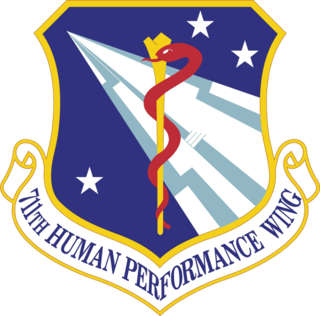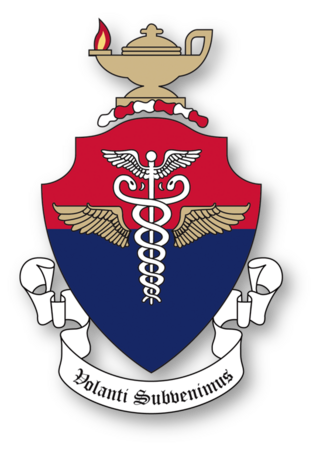Industrial and organizational psychology "focuses the lens of psychological science on a key aspect of human life, namely, their work lives. In general, the goals of I-O psychology are to better understand and optimize the effectiveness, health, and well-being of both individuals and organizations." It is an applied discipline within psychology and is an international profession. I-O psychology is also known as occupational psychology in the United Kingdom, organisational psychology in Australia and New Zealand, and work and organizational (WO) psychology throughout Europe and Brazil. Industrial, work, and organizational (IWO) psychology is the broader, more global term for the science and profession.
Psychology is the study of mind and behavior. Its subject matter includes the behavior of humans and nonhumans, both conscious and unconscious phenomena, and mental processes such as thoughts, feelings, and motives. Psychology is an academic discipline of immense scope, crossing the boundaries between the natural and social sciences. Biological psychologists seek an understanding of the emergent properties of brains, linking the discipline to neuroscience. As social scientists, psychologists aim to understand the behavior of individuals and groups.
Applied psychology is the use of psychological methods and findings of scientific psychology to solve practical problems of human and animal behavior and experience. Educational and organizational psychology, business management, law, health, product design, ergonomics, behavioural psychology, psychology of motivation, psychoanalysis, neuropsychology, psychiatry and mental health are just a few of the areas that have been influenced by the application of psychological principles and scientific findings. Some of the areas of applied psychology include counseling psychology, industrial and organizational psychology, engineering psychology, occupational health psychology, legal psychology, school psychology, sports psychology, community psychology, neuropsychology, medical psychology and clinical psychology, evolutionary psychology, human factors, forensic psychology and traffic psychology. In addition, a number of specialized areas in the general area of psychology have applied branches. However, the lines between sub-branch specializations and major applied psychology categories are often mixed or in some cases blurred. For example, a human factors psychologist might use a cognitive psychology theory. This could be described as human factor psychology or as applied cognitive psychology. When applied psychology is used in the treatment of behavioral disorders there are many experimental approaches to try and treat an individual. This type of psychology can be found in many of the subbranches in other fields of psychology.
Mobbing, as a sociological term, means bullying of an individual by a group, in any context, such as a family, peer group, school, workplace, neighborhood, community, or online. When it occurs as physical and emotional abuse in the workplace, such as "ganging up" by co-workers, subordinates or superiors, to force someone out of the workplace through rumor, innuendo, intimidation, humiliation, discrediting, and isolation, it is also referred to as malicious, nonsexual, non-racial/racial, general harassment.

The Air Force Research Laboratory (AFRL) is a scientific research and development detachment of the United States Air Force Materiel Command dedicated to leading the discovery, development, and integration of direct-energy based aerospace warfighting technologies, planning and executing the Air Force science and technology program, and providing warfighting capabilities to United States air, space, and cyberspace forces. It controls the entire Air Force science and technology research budget which was $2.4 billion in 2006.

The Southeast Asia Treaty Organization (SEATO) was an international organization for collective defense in Southeast Asia created by the Southeast Asia Collective Defense Treaty signed in September 1954 in Manila, Philippines. The formal institution of SEATO was established on 19 February 1955 at a meeting of treaty partners in Bangkok, Thailand. The organization's headquarters was also in Bangkok. Eight members joined the organization.

The Aerojet General X-8 was an unguided, spin-stabilized sounding rocket designed to launch a 150 lb (68 kg) payload to 200,000 feet (61.0 km). The X-8 was a version of the prolific Aerobee rocket family.

Brooks Air Force Base was a United States Air Force facility located in San Antonio, Texas, 7 miles (11 km) southeast of Downtown San Antonio.
Quantitative psychology is a field of scientific study that focuses on the mathematical modeling, research design and methodology, and statistical analysis of psychological processes. It includes tests and other devices for measuring cognitive abilities. Quantitative psychologists develop and analyze a wide variety of research methods, including those of psychometrics, a field concerned with the theory and technique of psychological measurement.

Harry George Armstrong was a major general in the United States Air Force, a physician, and an airman. He is widely recognized as a pioneer in the field of aviation medicine. The "Armstrong limit", the altitude above which water boils at the temperature of the human body, is named after him.

Edwin A. Fleishman was an American psychologist best known for his work in the field of industrial and organizational psychology. Among his notable achievements was a taxonomy for describing individual differences in perceptual-motor performance. The Fleishman Job Analysis Survey (F-JAS) that he developed under Management Research Institute has been cited 100 times since 1995. Additionally, Fleishman is the author of more than 250 research articles and journals.

Canadian Forces Station Armstrong is a former General Surveillance Radar station. It is located 1.1 miles (1.8 km) east of Armstrong, Thunder Bay District, Ontario. It was closed in 1974.
Systems psychology is a branch of both theoretical psychology and applied psychology that studies human behaviour and experience as complex systems. It is inspired by systems theory and systems thinking, and based on the theoretical work of Roger Barker, Gregory Bateson, Humberto Maturana and others. Groups and individuals are considered as systems in homeostasis. Alternative terms here are "systemic psychology", "systems behavior", and "systems-based psychology".

The 711th Human Performance Wing is a wing of the United States Air Force based at Wright-Patterson Air Force Base near Dayton, Ohio.

The Detroit Air Defense Sector (DEADS) is an inactive United States Air Force organization. Its last assignment was with the Air Defense Command (ADC) 26th Air Division at Custer Air Force Station (AFS), Michigan. It was inactivated on 1 April 1966.
Organizational space, sometimes called organizational architecture, describes the influence of the spatial environment on the health, the mind, and the behavior of humans in and around organizations. It is an area of scientific research in which interdisciplinarity is a central perspective. It draws from management, organization and architecture added with knowledge from, for instance, environmental psychology, social medicine, or spatial science. In essence, it may be regarded as a special field of expertise of organization studies and change management applied to architecture. The knowledge area is related to evidence-based design in which the influence of the spatial environment on patient's health, healing, and customer satisfaction are being researched in health care. It is also related to practice-based areas of management such as facility management which is primarily devoted to the maintenance and care of commercial or institutional buildings and to property management in which the operation of real estate is central. The scientific field of organizational space must be distinguished from social architecture in which the development of information and communication technologies is central and also different from space science which is concerned with the study of the universe.

Telekinesis is a hypothetical psychic ability allowing an individual to influence a physical system without physical interaction. Experiments to prove the existence of telekinesis have historically been criticized for lack of proper controls and repeatability. There is no reliable evidence that telekinesis is a real phenomenon, and the topic is generally regarded as pseudoscience.

Human factors and ergonomics is the application of psychological and physiological principles to the engineering and design of products, processes, and systems. Primary goals of human factors engineering are to reduce human error, increase productivity and system availability, and enhance safety, health and comfort with a specific focus on the interaction between the human and equipment.

The Naval Medical Research Command (NMRC) is an agency that performs basic and applied biomedical research to meet the needs of the United States Navy and United States Marine Corps. Its areas of focus include study of infectious diseases, biodefense, military medicine, battlefield medicine, and bone marrow research. NMRC is under the United States Department of the Navy's Bureau of Medicine and Surgery.

The United States Air Force School of Aerospace Medicine (USAFSAM) is the United States Air Force (USAF) organization focused on education, research, and operational consultation in aerospace and operational medicine. USAFSAM was founded in 1918 to conduct research into the medical and physiologic domains related to human flight, and as a school for medical officers trained to support military aviation operations, later coined as flight surgeons. The school supported early military aviation from World War I through the evolution of aviation and into the modern era. USAFSAM conducted medical research and provided medical support for the initial US space operations beginning in 1947 through the establishment of NASA in 1958. After the creation of NASA, USAFSAM continued to actively support civilian and military manned space missions through clinical and physiologic research. USAFSAM is one of the oldest continually operating school for flight surgeons and other operational medical personnel of its kind in the world. USAFSAM is located in Dayton, Ohio at Wright-Patterson Air Force Base, and is part of the 711th Human Performance Wing and the Air Force Research Laboratory (AFRL).













